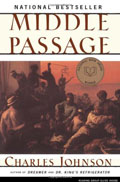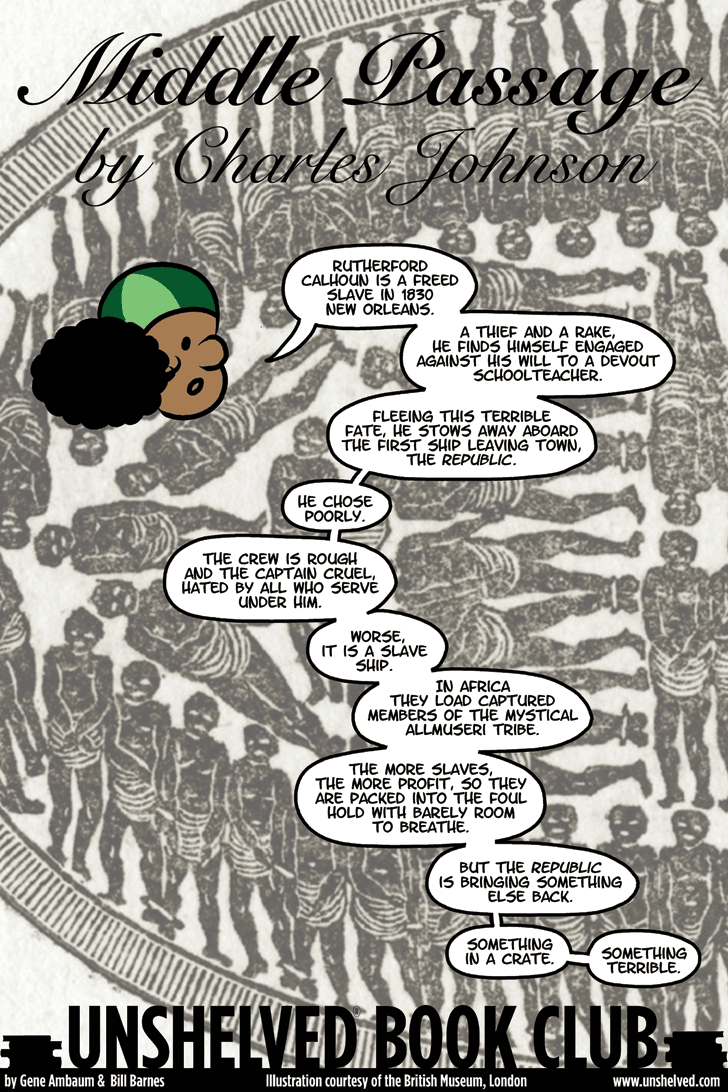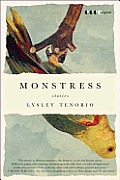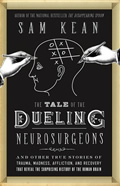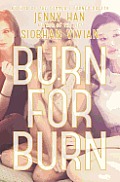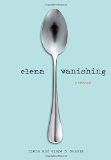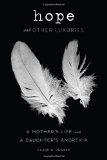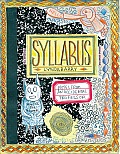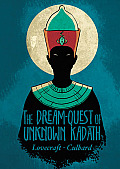Link to this review in the form of a comic strip by billba tagged literary • historical fiction
Link to this review by robert tagged short stories • literary
Eight stories acutely concerned with questions of identity, told through the lens of the Filipino-American experience.
Why I picked it up: It’s the 2014 selection for One Book, One San Diego.
Why I finished it: Lysley Tenorio grabbed my attention at the start of each of these stories. “Help” lead with, “In our battle against the Beetles, it was my Uncle Willie who threw the first punch, and for that, he said, he should have been knighted. I didn’t argue.” The settings are effective, whether a prop-filled “movie studio” in someone’s mother’s house or the San Francisco hotel room of traveling medical confidence men. Characters, both point of view and otherwise, were constantly addressing and sometimes changing their identities: names, genders, countries of residence, and position in family pecking orders.
Readalikes: This reminded me of two previous One Book, One San Diego selections. One of Tenorio’s stories is set in a guarded leprosarium, which reminded me of the setting for much of Alan Brennert’s Moloka’i, one of four books selected in 2012. For a nonfiction view of an immigrant’s experience, a gentle memoir about growing up in a refugee family, and a handy tip on smuggling mangoes across the US-Mexico border, try the 2011 selection The Gangster We Are All Looking For by Thi Diem Thuy Le. The neighborhoods depicted in Le’s work are real — I routinely grocery shop in Linda Vista and have made deliveries to refugee aid groups in City Heights.
Link to this review by sarahhunt tagged science
Until very recently, we’ve learned about the structure and functions of the human brain by observing the effects of brain injuries and disorders on vision, movement, language, and memory. Tatsuji Inouye was an ophthalmologist assigned to set pensions for soldiers partially blinded in the Russo-Japanese war. He was able to match the damage to their vision to the paths bullets had taken through their skulls and determine very specific vision centers in the brain. A woman who suffered damage to her amygdala was no longer able to feel fear. When scientists exposed her to things that should have been scary, she was instead really interested in them — she insisted on handling snakes at a pet store and even tried stroking their tongues. Her survival instinct still made her pay close attention to dangerous things, but she lacked the fear response that would normally go with it. These and many other patterns of injury to brains illustrate how neurons function, messages are passed through the brain, we make sense of our world, and how we communicate.
Why I picked it up: Kean’s The Disappearing Spoon had me repeating the compelling and interesting stories he used to illustrate the discovery and importance of each element.
Why I finished it: The stories of people struggling with mental and sensory limitations that should have destroyed them were utterly compelling. I learned what we know about the brain so far, and that there is even more that we don’t know yet. Throughout Kean thoughtfully digresses about what makes us human, brave, and loving. Even if there isn’t a physical seat of the soul in the brain, there is some combination of processes that gives us our sense of self, and keeps us searching, learning, and connecting with others.
Readalikes: I would pair it with Assassination Vacation by Sarah Vowell, which has a chapter on the doctors who tried to figure out if there was some organic disorder underlying the obsessions of Presidential assassins, and raced against time and public opinion to examine their brains after death.
Link to this review by diane tagged coming of age
Everything is idyllic on beautiful Jar Island, or so it seems to the vacationers who visit every summer. But once they leave, real life intrudes. Three high school girls — Lillia (the smart and dutiful Asian girl), Kat (the outsider), and Mary (the “fat girl” who moved away a few years ago and has returned thin and unrecognizable) — discover that they have something in common. They are often harassed and bullied by members of the popular crowd, some of whom are their former best friends. The three team up and plot revenge on classmates who have done them wrong. Of course everything goes terribly wrong.
Why I picked it up: A fellow librarian recommended it to me. And Burn for Burn was under consideration for Washington’s Evergreen Teen Book Award.
Why I finished it: Every chapter revealed something new. I was caught up in the girls’ plots, simultaneously rooting for them and wanting them to be punished for the pain they caused. This is mean girls to the max. At different points I laughed, cried, and wanted to throw things.
It’s perfect for: My teacher’s assistant, Haley, who loves to read realistic fiction that focuses on teen issues but hates sappy romance. She’s an amazing young lady who exists outside the norms of high school. I think she will sympathize with and root for Kat’s attempts to be accepted for her individuality. I can’t see her ever stooping to the measures these girls use, but I’ll bet she can relate.
Link to this review by flemtastic tagged coming of age • biography
Elena Vanishing
At seventeen, Elena Dunkle was severely underweight, had a weak heart, and experienced blackouts and seizures, all related to her relationship with food. Despite a supportive mother and father, she struggled with anorexia for years, and almost died several times. Intensive inpatient therapy with counselors and doctors helped, but eventually Elena was released to her family and her anorexia reasserted itself. Finally, Elena hit bottom and found a way to deal with her disease.
Hope and Other Luxuries
Clare Dunkle had a life that many would envy. She was a published author and had two successful daughters. Then her world fell apart. Her older daughter struggled with depression and self-harm, while her younger daughter, Elena, fought anorexia. Clare records the events of these years with brutal honesty, wondering if it was her fault and if she was doing enough to help.
Why I picked them up: I had read Clare Dunkle’s books before (The Sky Inside, The House of Dead Maids) but had only known her as a fantasy author. When I saw that she was writing about her role as a mother in her daughter’s struggle against anorexia, I was intrigued.
Why I finished them: These books pack an emotional wallop. Clare lays out all of her doubts and fears, plus her mama bear protective instincts when dealing with inattentive doctors and budget-minded insurance companies. Clare learned one way to deal with insurance companies: they are monitored in how they deal with customers and are not allowed to hang up, so Clare would keep asking for a supervisor and moving up the chain until she got to a decision-maker. One call took her six hours. Don’t let them transfer you to voice-mail! It was heartbreaking when she saw video of her daughter’s seizures, in which Elena clawed bloody furrows into her chest.
Elena had lots of tricks to fool the doctors into thinking she had a more healthy weight during weigh-ins like bb’s packed into her bra where the gel inserts would have been and weights taped to her ankles. In the depths of her sickness and desperation she defeated a nasal feeding tube by waiting until the round-the-clock caregiver fell asleep and then pumped her own stomach by pulling up its contents with a syringe.
Both Clare and Elena’s books include diary excerpts from the worst times. It was heartbreaking to read Elena write, when prompted about what she hoped for, “I don’t hope for anything.” Clare lived in daily fear of getting “the call.” Her husband didn’t like to be the one to wake up his daughter, afraid to find her dead instead of sleeping.
They’re perfect for: My sophomore daughter Grace. I am often afraid of what Grace is absorbing about body image. Writing Elena Vanishing was part of Elena’s therapy and helped her family talk deeply about her illness. I would like Grace to learn from Elena’s pain and suffering so that she doesn’t even flirt with extreme dieting.
Link to this review by geneambaum tagged art
“This is a book of notes, drawings, and syllabi I kept during my first three years of teaching in the Art Department at the University of Wisconsin Madison. The chronology is rough and mixed up in places but all kept by hand on pages of either legal pads or in standard black and white marbled composition notebooks.”
Barry’s syllabi are themselves works of art, collages of words, drawings, paintings, and other images that help her students understand her expectations and assignments. At the heart of it all is an insistence that her students let go of their inhibitions and create words and pictures by hand, without distractions, and that whatever they produce with effort and intention is completely worthwhile.
Why I picked it up: I’m a huge fan of Barry’s inspiring books on drawing and writing and creating.
Why I finished it: I’ve wanted to attend one of Barry’s workshops since reading the above books, but unless I happen to be attending a writing conference where she’s teaching, this is the closest I’m going to get. In one panel of the four pages of her original syllabus she has a “crappy” drawing and asks, “What is wrong with this picture? Answer: nothing.” I wish I could internalize that. Maybe one way to start is to cover pages and pages with thick layers of crayon, as she has her students do.
Readalikes: Throughout her courses, Barry has her students study Ivan Brunetti’s Cartooning: Philosophy and Practice and produce drawings in his style, in which characters are built out of simple shapes and have minimal features. (I’m ordering myself a copy today.) This brought to mind my favorite book on drawing people simply, illustration school: let’s draw happy people by sachiko umoto.
Link to this review by geneambaum tagged classic • graphic novel • horror
Randolph Carter is haunted by visions of enchanted lands. He prays to find the golden city he sees in his dreams. While asleep, he agrees to try to cross the gulfs to other dreamlands, to brave the boundless daemon Sultan and try to seek an audience with the hidden gods of dream.
Why I picked it up: I find Lovecraft inaccessible, but I’m always hearing great things about the stories. (In fact the only time I’ve really enjoyed his work is when I read Culbard’s graphic novel adaptation of At the Mountains of Madness. Plus Culbard has been doing some amazing work this year, including Brass Sun, Celeste, and Wild’s End.
Why I finished it: Culbard’s colors are spectacular. From the golden city surrounded by clouds, blazing in the sunset to the sudden flash of red blood in a nearly black and white scene, they demand attention and always work in service of the story.
Readalikes: Gaiman’s Sandman series, which centers on Dream of the Endless, an immortal being in charge of just what his name implies. You can jump in anywhere (and then go back and read the whole series in order), but I most often return to Dream Country, which contains a few of my favorite stories and would be a good place to start.
